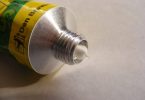Table of Contents
How to clean a Fish Tank
Cleaning your aquarium is one compulsory skill in fishkeeping.
A clean aquarium not only looks good, but also helps maintain the pleasure and the health of the fish, because overtime, metabolites and the nitrates build up, and reflect on the appearance of the aquarium and the wellbeing of the fish too.
Also, get filters to maintain the cleanliness of the water, there could be good versions in the market, but those versions may not be good enough to keep the tank healthy and very clean, so endeavor to learn what you need to maintain a healthy fish tank or aquarium.
How often should I tidy the aquarium?
Being conscious enough to know when you should to clean a tank depends on a variety of factors, like the size of the aquarium, the amount of fishes, the species of fishes, and the system of filter. There is also an ideal activity of cleaning which can help you.
First, it is not necessary to clean the tank daily, however, there are also things that aquarists can look out for to bring you clarity as to how you can take care of the tank enough to make the tank clean and healthy for the fish. Observe the species for some time to see that they are not out of breath or looking lazy.
For a large tank, try to change the water weekly, that way you ensure that your tank is clean routinely, which is healthy for the fish as well as the tank.
To clean weekly, remove at least one-quarter of the water that is within the tank, and change it with water that is already treated.
Be mindful of the ammonia level, the PH level, and the level of nitrate that is in your tank, you can also check these things monthly for certainty, also have a journal of the readings after each test to help you identify the changes that occur when they occur.
Also look out for an abnormal behavior in your fish, cloudiness, and any form of discoloration.
Make sure to clean the cartridges of your filter once in a month, then do a thorough cleaning of the aquarium two times in a year, including the equipment that you use too.
To do this, you may have to remove all that is attached to it, then check if everything is stable, like the pumps, the filters, the lights, check all things and replace what is damaged or broken, then clean up the dirt and dust and all that should not be there.
Supplies You Will Need
- Cleaning pad or algae scrapper
- Bucket
- A bowl or container to temporarily house the fish
- Water conditioner
- Cup
- Filter media
- Plastic razor to remove stubborn dirt off the glass
- Fish net
- Siphon or gravel vacuum
- Paper towels
- Water in a bowl for refilling
Here’s a to everything you need to know about how to clean a fish tank.
How to Clean a Fish Tank
Step 1: Put off all appliances
Before you start cleaning, endeavor to put off all the appliances, the electrical appliances and the appliances that do not require any electricity.
Appliances like the filters and the heaters cannot function without water, and so need to be removed before the water is poured out so that the appliances are not damaged from an attempt to function without water.
If you have ornamental plants or artificial plants, remove it too.
Step Two – Water Removal
It is crucial to remember that when using a siphon gravel vacuum to remove water from an aquarium, you should only remove a small amount of water at once (typically between 10 and 20 percent of the aquarium’s total volume).
In order to maintain a healthy environment for the fish and plants in the aquarium, it is best to avoid disturbing the beneficial bacteria and other organisms that live there.
Follow these steps to use a siphon gravel vacuum:
- Connect the hose to the siphon gravel vacuum and place the open end in a bucket or other container.
- Make sure the other end of the siphon gravel vacuum is inserted all the way to the bottom of the aquarium.
- To start the water flowing out of the aquarium and into the container, squeeze the bulb on the siphon gravel vacuum to create suction.
- Move the siphon gravel vacuum around the tank’s bottom, gently sucking up debris and dirt along with the water. To avoid releasing harmful gases into the water, take care not to disturb the gravel too much.
- Once you’ve removed the desired amount of water, remove the bulb from the siphon gravel vacuum to stop the flow of water.
- Repeat this process until the desired amount of water has been removed from the aquarium.
- It’s also a good idea to use a water conditioner in the aquarium to remove any chlorine or other potentially harmful chemicals from the new water you’re putting in.
By following these steps, you can safely and effectively remove water from your aquarium while keeping it clean and healthy for your fish and plants.
Step Three – Clean the Glass
Clean the glass area especially inside of it with the algae pad. You can find a lot of algae scrapers in the market including the magnetic scrubbers and the scrapers that have long handles.
Do not use algae pad with soap or chemicals to clean as this can kill the species of fish in the tank.
For stains and residue that are stubbornly fitted round the glass and that won’t go off, get a blade to work and get them off the glass, but do so carefully so that you do not hurt yourself.
In an acrylic aquarium, you can use a plastic blade to prevent it from scratching.
Step 4: Prepare the decorations
When the glass is clean within, remove the artificial plants, the stones, and the ornaments with.
Do not wash using any detergent or soap, as it is difficult to rinse off the soap completely as they can be harmful to the fish. Employ the algae scraper while cleaning ornaments and rinse with warm water to remove algae and dirt.
Step 5: Clean the filter
Start with unplugging the filter and clean the filter with white vinegar and water, then scrub the filter with a filter scrubbing brush to eliminate any article of algae, allow it dry when you are done, or you can after unplugging the filter this, remove it and rinse it.
You should do this at least once a month because filters are not self-cleaning devices, and so the fish poops and other dirt do not mysteriously disappear from the filters.
Filters are basically cans for collecting garbage which must be cleaned regularly to remove any debris before the filter clogs up.
Check your filter cartridge and clean it as well, then rinse with cold clean water.
Step 6: Refill the water
After cleaning, you can the refill the aquarium with water that is clean and fresh, and has a temperature that is suitable for the aquarium.
Finally, connect the heater then place all the artificial decorations where you want them to be and how you want them to be for your aesthetic pleasure.
Do not turn on the lights immediately. To reduce stress on your fish, you can keep it dark for some hours after the entire cleaning process.
Sit back and enjoy your clean tank.
Frequently Asked Questions About How To Clean a Fish Tank
Q: How do I get rid of algae in my fish tank?
A: You can introduce algae feeders to the tank, or use tools such as the magnetic scrubbers, then control the feeding habit of the fishes or the aquarium. Change the water constantly too.
Q: How often should I clean my filter pads?
A: Be consistent with cleaning it.
The filtration done mechanically helps sometimes and equally does not help when the trace of a living organism is left to rot in that space.
More so, cleaning your filters regularly is a way of maintaining the clarity of the water as well as controlling the algae.
What happens when the tank is not cleaned regularly?
When the tank is not cleaned regularly, the tank and the fish are exposed to the buildup of ammonia and nitrites, which can pose a serious risk to your fish.
Not cleaning it regularly can also affect your fish environment as this can cause discolouration, your fish may start to fall sick or exhibit decreased energy, so when the tank is not well cleaned, death can happen. Cleaning your fish tank regularly as well as other agents of contamination is necessary.
What is the ideal size of the tank to keep it healthy?
The size of the tank should be determined by the size of the fish and the number of tank mates as well as sizes that you want to put there.
A big fish will take up a lot of space and emit a lot of trash. Should the tank contain many fishes, there will a lot of wastes formation. If you keep few fishes, the dirt will be easily controlled.
What is the duration of cleaning an aquarium?
The time the cleaning of an aquarium will is largely dependent on the fish tank itself.
Typically, a small tank of one to five liters may be cleaned for about fifteen minutes while the big one can happen within an hour.
How can I clean an aquarium that has eggs in it?
You can simply wait till the eggs are hatched, this takes about one week.
But if you still want to clean, just simply avoid where the eggs were laid. For instance, if there are eggs in the gravel, just avoid the gravel areas and clean the other areas.
Do I remove the fish while changing the water?
There is no need for that, except you have a small bowl.
Fishes do not like being disturbed nor stressed, and removing the fishes can initiate stress. Unless it is necessary, have a water change with a small bowl.







